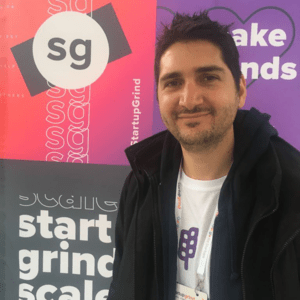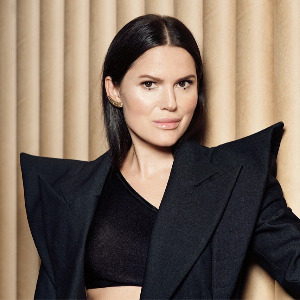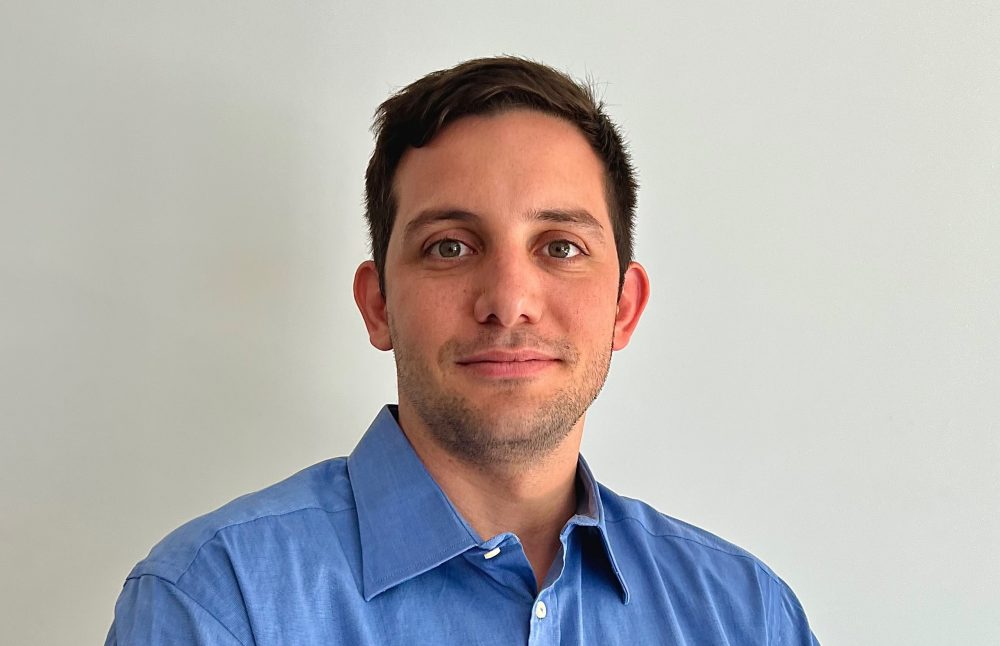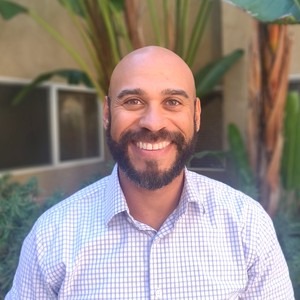Feeling burned out? After years of working with CEOs, Heads of Growth, & Marketers from all over the world, I have stories & experience ready to support you on your growth journey. I’ll help you identify your biggest opportunities for sustainable growth for yourself and/or your business.
Crushing churn to build sustainable business models
Listen on:
About this episode
Mentors Dani Hart and Anita Toth join to discuss how Anita helps companies build proven and reliable churn reduction systems in order to create sustainable models with customer value top of mind. Anita has had quite the journey. While starting her career in geography & philosophy academia where she advocated for the environment and health, she also had side hustles, including selling honey from her desk, which allowed her to "bump into what she didn't like" as she says, to find what she does like - owning a business, raising a family, and making an impact on the world around her, one founder at a time. Listen in to hear these two mentors dive into what it means to have a sustainable business model with customer value top of mind.
What they talked about:
- Getting started in customer churn and why it's important
- How to create a sustainable business model
- How to start talking to customers, even when it's scary
- Navigating work/life balance as a single mom
Transcript
Dani Hart: Hello Growth Mentor community! My name is Dani Hart and I’m a mentor and the Mentor Ambassador here at Growth Mentor. I’m also currently a digital strategist at the American Battlefield Trust working to preserve America’s most hallowed ground, and a Writer at Eterneva, a company that turns ashes into diamonds. Now today, I’m joined by Anita Toth, who’s a fellow Growth Mentor. So Anita is the Chief Churn Crusher, where she works with companies to build proven and reliable churn reduction systems to help create sustainable business models with customer value top of mind, Anita has had quite the journey, while she started her career in geography and philosophy, academia, where she advocated for the environment and health. She also had side hustles, including selling honey from her desk, which has allowed her to “bump into things that she doesn’t like”, as she says, to find what she does like – owning a business, raising a family, and making an impact on the world around her one founder at a time. I for one am very excited to share a conversation today with someone who’s had such a diverse set of skills and experiences. So thanks for joining us today. Anita.
Anita Toth: I’m so happy to be here, Dani, looking forward to this conversation.
Dani Hart: Heck, yeah. I’d love to start with learning more about your journey and what landed you focusing completely on customer churn? Can you please explain how you got started with your business and what you do today?
Anita Toth: Absolutely. And maybe what I’ll do first is explain what customer churn is because churn is a very specific metric, that subscription model companies, or SaaS, meaning software as a service companies use. So churn is is when a customer stops being a customer, they’ve turned out of the business, they’re no longer a customer, they’re no longer paying money for your product or service. So that is what I do. And then businesses where there’s a monthly subscription, it gets to be quite costly when you’re looking to acquire customers. And then at the same time, a whole bunch of customers are leaving it, it really has a big impact on growth and revenues. So this is specifically what I focus on. And how I got here, as you mentioned, kind of a bit of a long and winding path. I have 20 plus years in working in an academic research institute, over two different world class universities have been fortunate to work in and learn about qualitative research methods. So essentially, what I do is help companies understand, what makes their happy customers happy. And they’re unhappy customers, someone happy that they’re leaving, they’re churning out of the business. And I had a layoff, I always had side hustles going on, like you mentioned the honey, I didn’t mention that sometimes I also sold eggs off of my friend’s farm, where he where he had the honey. So I had this, this, this side hustle going all the time. In fact, in one year, I sold over if I can’t believe this over 2,000 pounds of honey in these like one kilo jars. So it’s something I really liked doing and I enjoy helping people. And I just realized that in, you know, my skill set as a qualitative researcher, I was really looking to find what I could do, I didn’t want to sell the honey full time. And I lost my, lost my job. Actually, I was laid off research funding dollars dried up. And so I bounced around for a little while, I had a lead generation business where I ranked websites and then sold the leads, really did really well with that totally hated it, like absolutely dreaded every day going to work. So I sold that business. And then I got into a Facebook ad agency, which taught me a lot about marketing how people think. And that’s where I started to see how important it is to really understand who your ideal customers are. That’s that qualitative element, the only way you can do that really well is by talking to them. So that can be either through surveys or customer interviews. Closed down the Facebook ad agency this was back in the day when we still had Power Editor. It’s very different from what Facebook is today. And our Facebook ads are today I should say, I got involved with a friend. He and I were building a SaaS company around qualitative feedback methods. We wanted it specific to the industry we worked in which is academia. And yeah, that’s where I learned about churn and how painful it was. We had a beta one okay, but both of us didn’t have the passion for it, so we just let that go. But I realized just how exciting working in sauces as well is how I could use this skill of researching and discovering. Again, what makes customers unhappy and what makes happy customers happy to help companies grow and get past this pain point of where they’re doing all this hard work to acquire customers. But then there’s so many customers leaving and they know the main reasons but yet, every effort that they would make, to try to get customers to say, would either kind of workout or it wouldn’t work out at all, and many of them were frustrated. And that’s, that’s the gap by Phil is coming in to help them with a strategy to to collect this data, and then use it to drive growth by keeping their customers longer.
Dani Hart: That’s awesome. And certainly a lot to unpack, you know, lay off to where you are today, where you have a successful business where you’re able to really bring what’s important to you to the table and say, Hey, this is a really sustainable way of doing things. So I really do love your approach to growth. It’s one that focuses on building relationships with customers to help build products and services that really suit our needs as they arise. And I think we’ve seen that be very important in this past year, especially as customer behavior changed and continues to change overnight. So can you elaborate on how this approach helps create sustainable business models?
Anita Toth: Absolutely. So the great thing about retention that that most companies either really don’t see, or they’re just never thought of, is, the longer you can retain customers, there’s, there’s five things that tend to happen. One is that you can upsell them into higher price plans or products, you can cross sell them into other products or services that you might have. It’s easy to renew, especially if it’s a month to month, or even yearly or bi are contracts that are several years long. You can renew that way. They give positive word of mouth marketing, which is always wonderful. It’s a really hard metric to capture, but just go on Amazon and look at all of those reviews. And just think I know I just did it last night, went through, looked at the reviews and decided to buy a product on the positive word of mouth marketing. And then referrals where it’s where it’s, you know, someone came to them, ask them what they thought about the software or the product. And, and the referral is made, hey, I use this, I love it, why don’t you try it. So the sustainable part is that the longer customers are loyal, the more they buy, full stop. So it’s whether it’s just renewing, whether it’s upselling into higher price products, or whether it’s cross selling and purchasing different products to help them accomplish what they want. That’s the sustainable model. And the challenge is with companies, they don’t always see that there’s so many different ways they can build that loyalty with customers, the more you build the loyalty, which is really a great customer experience, plus they’re getting value from whatever the product or services, when you’re able to give that value, especially customers will stay. And the challenge is of course figuring out what that value is and what it means to the customer, not thinking from the company’s perspective, like we often do. And the best way to do that, of course, is to talk to them and find out what they think.
Dani Hart: I love that. If you fill up your customers cup with tons of value, then that’s going to spill over and they’re going to tell their friends and they’re going to continue to buy and be loyal customers. And I think that there’s been a lot of great examples of that in this pandemic. Everything from Indiegogo campaigns where people are keeping their donor customer base, a top of mine, sharing exactly what they’re doing and and showing that reactiveness to be able to retain these customers. These companies that have stayed adaptive are the ones that are keeping their customers top of mind. But I do know that that is also as you mentioned, very emotional. It’s very difficult sometimes to take a step back and remove ourselves from the ego that’s associated with the mission of our products and say, hey, how do we do this better? How can we learn from our customers? It’s a very vulnerable place to be because they might say, hey, you’re doing something wrong. And you know, that’s hard to hear, especially when we’re already stressed. So if you were to tell somebody today, just getting started with talking to their customers, where would you recommend that they start,
Anita Toth: There’s actually two places that I would recommend. One is with, like I said, those happy customers and find out and that would be take your top 20% of your best customers, these a, you know, they probably have been with you the longest they’ve purchased the most, whatever, whatever metrics you choose to define those, you know, very happy, very loyal customers take the top 20% of those . And then start at the same time speaking with whoever is leaving those customers that are turning. So with some companies, they have cancellation flows, you can add in a little calendar link book, I suggest if you can 30 minute call, if possible. 15 minutes is great in terms of just getting them on the on the call in to speak. But you don’t really tend to get down into the feelings we all give sort of our surface level answer or socially acceptable answer, you need to dig below that and find out, you know, well, why is price a problem? Well, once you start digging and speaking with them over that 30 minutes, you realize that there’s like five other things going on. And price wasn’t really the problem is that your product was competing with five other products that they have, that they’re currently using in their tech stack, and one of them had to go. Well, they weren’t quite seeing the value with your product. So your product, you know, was the one that they decided to walk away from. Take that time and get down to the feelings, first start with their thoughts, ask them questions, why did they become customers? What do they like? What don’t they like, and then ask about the value. And that’s where you’re going to hear if they don’t feel that they’ve received the value, you’re going to start hearing that feeling part, which becomes really critical because you take that information. And you not only put it in your customer journey, but you put it back in your marketing and sales. So if it’s your happy customers, then you’re finding out why they’re happy, why they stay, why they keep continue to choose your product, when they might have the same budgetary constraints as a trend customer, but why did they choose to stay, and then you take that gold, which it really is, and put it back in your marketing, put it back in your sales process, so that you can start attracting other customers like them. So that is that is really where I’d start. But with those two, you’re going to learn so much I agree with you, Dani, it is hard to listen. So I have some suggestions. One is you can always hire a third party company, to do this for you. That’s part of the services I offer to my clients. But if you don’t want to go that route, the other thing you can do is to try to get someone in the company that is good at asking questions, but is a little bit removed from, you know, being impacted by whatever answers the customers give. So if you’re really close to it, this is your baby, you’re a founder, if there’s somebody else on the team who might be able to take this roll over, have them do it. And I do have some resources on my website, to on you know, some of the types of questions that you can ask I have a comprehensive guide to customer feedback questions go there. And you can just take those questions and use them. But if you really feel that emotionally, it’s going to be tough, then then bring someone in who’s just a little bit removed, so that the risk isn’t there of either arguing with the customers, which you don’t want to do or not not listening at all to what they’re saying and just discounting it. So that’s probably the best thing you can do.
Dani Hart: Awesome. Yeah. And I imagine that if there already is a customer success team in place that maybe these questions could be added to some scripts or phone calls that are implemented to help understand why these people are leaving. And that could lead to another question of what role does Customer Success have in elevating the needs of the customer.
Anita Toth: So Customer Success teams again, I realized we’re talking very generally here and so some people might not be familiar with what Customer Success is. They’re more used to dealing with customer support. So customer support is very reactive. The customer is reaching out to get assistance with something. Customer success on on the whole is a team which Customer Success managers have a book of accounts, and they’re proactively helping their customers through the customer journey. So there’s there’s often regular meetings, they’re reaching out, they’re assisting with, some teams have on onboarding specialists to make sure that when the customers become customers, they can, they can get up and out of the gate. So Customer Success really is, I don’t want to say the voice of the customer, but they’re probably the one team or area of the company that works most closely, or hears most closely to that voice of the customer. They’re hearing the customers frustrations, they’re hearing some of the customer’s challenges. They’re working with the customer and a trusted relationship to help the customer reach those goals or outcomes that they’re seeking. Customer successes is a great place to start collecting this feedback, with one caveat, and I’m gonna say this, it needs to be a formalized thing. So a Customer Success Manager just kind of asking their questions, putting their notes into the CRM after the meeting is not going to cut it. Because you want to compare answers, you want to have the same questions going out to everyone. And then you can start comparing and contrasting. What’s the difference between let’s say, this particular question company versus this particular company, when the vertical is the same, and their outcomes are the same, but one company seems to be doing really well, with what the outcomes are seeking, and the other company isn’t. So you want to have some sort of formal program, whether you have a customer success team or not, I want to say this should be hopping on somebody in the company should be hopping on calls, with customers getting this feedback weekly, if you can, it might only be two calls a week, that’s if you do the 30 minutes, that’s an hour. But over time as you start collecting 10 2030 4050 interviews, and then of course, analyzing that data, not just collecting it, you’re gonna really start seeing patterns. And that’s where you’re going to really find those places where you can make changes to better support the customer and their outcome, which means that they will stay longer and become more loyal.
Dani Hart: Everything that you just said reminds me of an example, I was working at a company where acquisition felt really hard and extremely unsustainable, because our cost per lead was nowhere near what we would make from this person in a lifetime. We ended up putting together a team of people throughout the organization, and we called it abandon the abandons. And we focused on how do we make sure that these people see the value as they’re signing up for the product, it was a complex product, where people had to provide a lot of personal identifiable information. So it wasn’t simple to convert. We had two customer success, people that join the table along with compliance Product Marketing, enough people to get the job done. But I will tell you that the customer success people were the ones that were bringing both the quantitative and the qualitative data to the table, where they could show you a very concrete example of one person saying it but they could also back that up with data to say, Hey, you know, this is the example of what we’re going after. But here’s the why, you know, after seeing so many times where that was happening, it was an opportunity to say, hey, let’s bring this up. And let’s discuss this as a group. So that positive feedback loop was incredibly valuable. And yes, we ended up like cutting our acquisition costs in half by focusing on that part of the funnel. And we made a completely sustainable business model, because we focused further down funnel and and that did come after trying acquisition after acquisition channel. It didn’t happen overnight. You know, it’s an example of exactly what you’re talking about. And I think that the voice of the customer was at the center of that conversation. And that’s why it was successful.
Anita Toth: I got to say, Dani, that the key to this and making it successful if to get to that sustainable business, you set it. You take the quantitative data that you’re seeing, so you want to see what’s the usage data, how many times are they logging in? What’s the frequency, whatever those key metrics are for your business? Look at those. And then you need to find out the why behind which is the qualitative surveys are great. They have a place in business, but I will tell you, if you really want to go deep, like your customer success team, what did they do and they’re talking to those customers. At some point, you have to get on a call and start talking to them and really getting deep finding out what those thoughts? What is their definition of value? How do they feel? How do they feel when this part doesn’t work? It’s that’s the critical part. That’s what’s going to move everything ahead far faster than just releasing NPS surveys and saying, Oh, well looks like looks like we’re doing okay.
Dani Hart: Right, yeah, it’s someone that’s really going to advocate for that customer. And how organizations do that will totally depend on the culture of the business. But it comes back to intention. Every founder needs to be intentional about this and every founding team as well, because I think there’s also often a clash of the founder and potentially founding team of the founder is moving ahead with their mission and how they see the problem in their head, but not really adapting to how the customer has adopted the product and has taken it from there. So I think that there’s opportunity for, you know, those founding teams to just really put some kind of intentionality around, how do we ensure we’re staying on top of our customers needs, and having these conversations on a regular basis and bringing them back to the team so that everybody’s hearing that voice, not just the person that’s in charge of churn, but the entire team, because whenever there’s a problem, humans by nature, want to help fix it. And we all approach the same problem very differently, especially for different parts of the organization, you know, marketing is going to look at, how can we communicate with these people, whereas product might think, hey, how do we build a feature or remove a feature, so that they can really get the value and then customer success, obviously, is helping guide them. So you know, there’s there’s going to be a lot of different tactics that arise, but that problem needs to be the commonality that brings these people together the problem of how do we get more value to our customers?
Anita Toth: And so the term used is now customer centric business. So I’m sure we’ve all heard it. The lip service is there, I’ve heard a lot of companies say they’re customer centric, and then you become a customer. And you’re like, there’s no way this is customer centric, at all. I think it’s every every team member, like even billing has a role to play. If your billing system is is terrible. It’s either difficult for customers to pay, or it just feels like I hate this, where you’re just asking for money. It’s awful. And then HR with hiring great employees, great employees, the longer they stay, they also, you know, help they go that extra mile. So the customer experience is better.
Dani Hart: Yeah, that’s great. All right. Well, I think that this has been a loaded an awesome conversation with plenty of good nuggets to unpack for anybody that’s looking to get started in this. As we said, we know it can be challenging. So please reach out to either of us, if you’re looking for tactics on how to get started. I know when I used to start talking to customers, it was scary. And I would get really nervous. And I would have to, like do squats around the office just to get that negative energy out before I talked to them. But often, it just comes back to just reframing I think, you know, and having that conversation internally with yourself to say, I’m going to make the product better by getting the insight from these people.
Anita Toth: That’s gonna say to that, Dani, see this as an opportunity, rather than this is a fact finding mission. And we’re going to confirm or you know, that people love or hate us or whatever, go in with an open mind. Be curious be. And it’s hard. I totally agree with you. There’s a mindset that you have to take. And like you said, like, get rid of that nervous energy. I still have it too, sometimes. Absolutely when I’m doing this, I’ve been doing it for years, it happens. Because because it’s so unknown, you don’t know what people are gonna say and where the conversations gonna go. Even though you can guide it, you know, it just might take a left turn, and suddenly it’s in territory that you didn’t expect. So that’s why it’s so important to have things like a written intro that you can read, have your questions written out, record the call, all of like, don’t work, don’t rely on trying to take notes by hand or type them, it’s just way too hard. And that allows you then with maybe if your emotions are rising to just kind of go, Okay, you know what, I’m just gonna take a deep breath here while they’re answering and calm myself down. So I’m so glad you raised that.
Dani Hart: Deep breath and stick to plan. Awesome, which will bring me back to my own plan for this with a few questions to finish this up. So as a founder and single mom, how do you navigate this work-life balance?
Anita Toth: So I don’t think there’s actually ever a balance, I think that’s always one part that’s a little out of whack. I get up really early, I don’t like it. But I have to do it, I take my mornings, I prepare food for the day for me and the kids, because I have their 12 and 14. Now, if it’s not fully prepared for them, and right in front of their noses in the fridge, there’s nothing to eat. In and I meditate, I do everything I need to do for myself, look at my schedule, all of that before the kids get up. Because once they get up, forget it, then I’m dealing with whatever I’m dealing with. And I find that that really helps. The other thing is in the evening, just we clock off at 8:30. Like there’s, there’s no TV, there’s no nothing digital, no phones, it all gets put away. And then we can focus on on actually talking with each other or whatever, we’re gonna do go for a walk. Those are the things that I do. And it really helps to have those moments during the day. So first thing in the morning, I’m alone, I can focus. And then later at night, we don’t have those screens. And then we can talk in depth or just enjoy each other’s company. And it’s a really nice way to wind down the day. So those those are really my big two lifesavers.
Dani Hart: Yeah, thanks for sharing. And I will say I really admire how intentional you’ve been about creating your business, but not just a business, a business that can fit in with your lifestyle and your kids and you know, where you live everything right? It’s, it’s something that you’ve created yourself and have been able to create something really meaningful, which is awesome to see. And an incredible example for others.
Anita Toth: It’s been hard. I won’t say that there are there haven’t been many times when I kind of question What am I doing? Is this ever gonna work? Why, you know, I don’t mind the hard work. It’s the tough part is trying to you know, there’s many times where I’ve had to say to my kids, Okay, you know what, I’m back to back calls today. unless somebody’s bleeding, I need to be left alone. You guys can figure it out. You’re old enough. Now I don’t need to handhold. So, yeah, it’s been tough. It certainly has. But like, I can never imagine going back and working for someone else. I never did well with it. When I was there, I tolerated it. So I just can’t, this is my life. This is my passion. And I just keep going through the tough times, and I celebrate the good.
Dani Hart: Well, it’s beautiful and inspiring to see. So thank you. Lastly, who should book a call with you and the growth mentor community.
Anita Toth: So anyone that wants to focus on keeping their customers longer, and realizing that the retention piece is a growth lever to it’s not just about acquiring, if you have one customer, then then you can book and start talking strategies on how you can keep them longer. Definitely women founders, I’m happy to talk about that, you know, the challenges we have and we do it is a little different for us. And I’ve found that we support each other through our other challenges that we have just being females in business. Yeah, it is a little different. And anybody who is looking to learn more about who their ideal customers are, so if you’re not really sure you don’t have that ideal customer profile, dialed in, definitely reach out and book a call and we can talk about it.
Dani Hart: Awesome. Well, thanks so much for your time and wisdom here today Anita.
In this episode
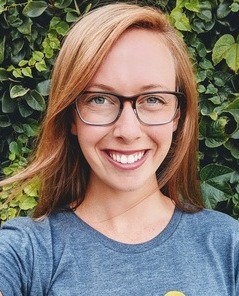
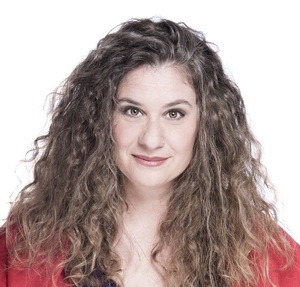
I love helping companies increase their revenue and profits by keeping more of their customers longer.
Join the community
Enjoy the peace of mind that advice is always only one Zoom call away.
